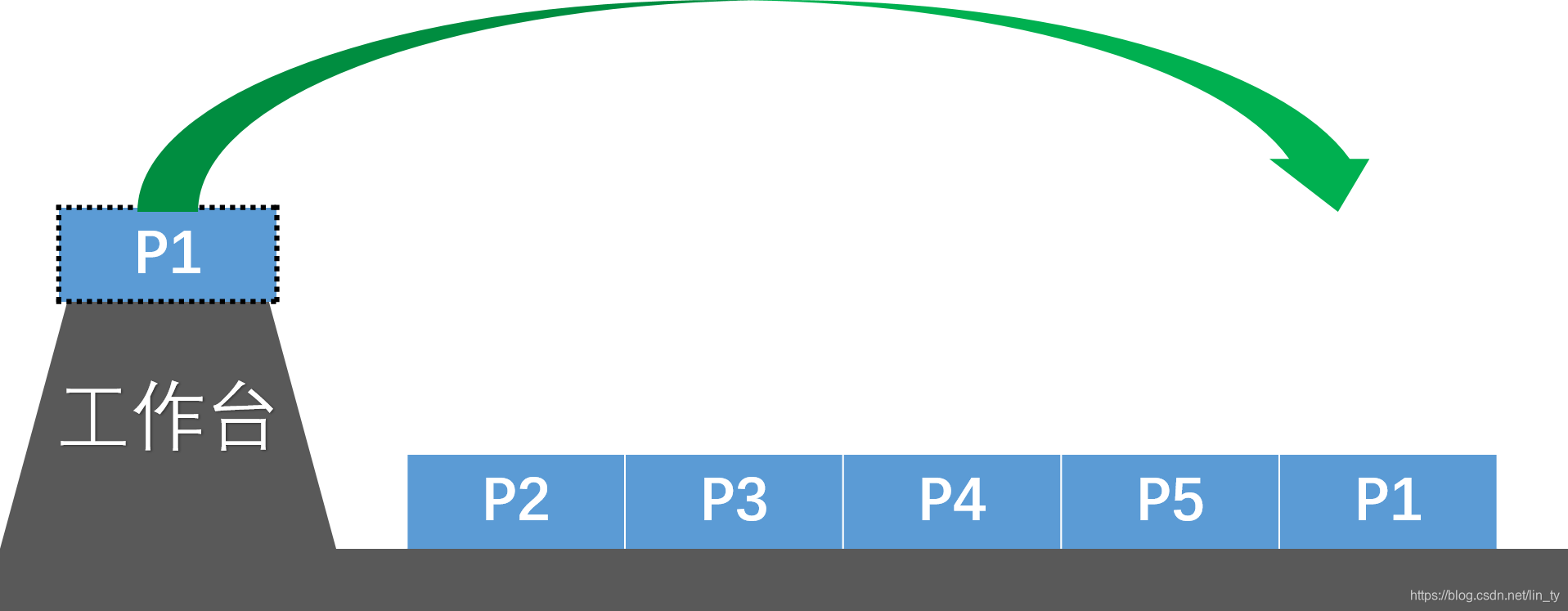数据结构与算法学习|REVIEW &1
数据结构与算法学习|REVIEW &1
- 数据结构与算法学习|REVIEW &1
- Day 1
- Part 1 Learned
- Part 2 Check
Day 1
Part 1 Learned
数据结构——(以下仅为联想框架)
1.顺序表与链表(逻辑结构/物理结构)
2.栈 stack
3.队列 queue
4.标准库STL(1)—神仙库
stack queue vector list
set map
Part 2 Check
1-1 (https://onlinejudge.u-aizu.ac.jp/problems/ALDS1_1_D)
Maximum Profit
Attention:
(1)先判断最小的在哪里
(2)再在后面找最大的
#include<iostream>
#include<limits.h>
#include<time.h>
using namespace std;
const int N=2e5; //2*10的5次方
int p[N]; //定义数组
int main(){
int n;
cin>>n;
for(int i=0;i<n;i++){
cin>>p[i];
} //输入
int minval=p[0]; //第一个作最小
int maxval=INT_MIN; //整型最小,在time.h头文件里面
for(int i=1;i<n;i++){
maxval=max(maxval,p[i]-minval); //max和min直接在iostream里面
minval=min(minval,p[i]); //遍历每一取最小
}
cout<<maxval<<endl;
return 0;
}
1-2 (https://onlinejudge.u-aizu.ac.jp/courses/lesson/1/ALDS1/3/ALDS1_3_C)
Doubly Linked List
Attention:
(1)typedef的用法区分(代码区)
(2)环形链表的结构体写法风格——过程要理解
#include<iostream>
#include<cstdio>
#include<cstring>
#include<cstdlib>
//环形链表?
using namespace std;
struct Node{ //如果想用typedef?
int key;
Node *prev;
Node *next;
}; //结构体创建一个节点包含双向指针和数据
Node *head;
//(前面加typedef)后面是Node,*LinkList=>直接 Node *LinkList;区别
// typedef struct{} Node;
// typedef struct{} *LinkList;
// Node *p <=> LinkList p
//定义别的变量的属性与变量的区别
// typedef int *point_int;
// point_int p; <=> int *p;
Node *listSearch(int key){ //节点遍历
Node *cur=head->next;
//LinkList cur ;
while(cur!=head&&cur->key!=key){ //判断不是回到头了?然后值又不符合标准
cur= cur->next;
}
return cur;
}
void init(){ //初始化节点
head=new Node; //类比动态数组?但是还是有点不太清楚
head->prev=head; //都指向头
head->next=head;
}
void printlist(){ //打印链表
Node *cur =head->next;
int isf=0;
while(1){
if(cur==head)break;
if(isf++ >0)printf(" "); //控制空格输出
printf("%d",cur->key);
cur=cur->next; //node的指针cur
}
printf("\n");
}
void insert(int key){ //插入一个具体的数
Node *x=new Node;
x->key=key;
x->next=head->next;
head->next->prev=x; //把原来节点的路径复制到x;
head->next=x;
x->prev=head; //更改别人的路径
}
void deleteNode(Node *t){ //删除节点
if(t==head)return;
t->prev->next=t->next;
t->next->prev=t->prev;
free(t); //释放节点空间
}
void deleteFirst(){ //删除第一个节点
deleteNode(head->next);
}
void deleteLast(){ //删除最后一个节点
deleteNode(head->prev);
}
void deletekey(int key){
deleteNode(listSearch(key));
}
int main(){
int key,n,i;
char com[20]; //指令对应
scanf("%d",&n);
init();
for(i=0;i<n;i++){
scanf("%s%d",com,&key);
if(com[0]=='i'){insert(key);}
else if(com[0]=='d'){
if(strlen(com)>6){
if(com[6]=='F')deleteFirst();
else if(com[6]=='L')deleteLast();
}
else{
deletekey(key);
}
}
}
printlist();
return 0;
}
1-3 (https://onlinejudge.u-aizu.ac.jp/courses/lesson/1/ALDS1/3/ALDS1_3_A)
逆波兰数-stack
Attention:
(1)stack的STL函数库的调用
(2)注意多位数字,char不太行得通,走string,但是也要注意string转换int型。-> "sstream"函数
#include<iostream>
#include<stack>
#include<sstream>
using namespace std;
bool isDegital(string str) {
for (int i = 0;i < str.size();i++) {
if (str.at(i) == '-' && str.size() > 1) // 有可能出现负数
continue;
if (str.at(i) > '9' || str.at(i) < '0')
return false;
} //判断一个string是否为数字的模块函数
return true;
}
int main(){
stack<int> s;
string c;
int a,b;
int p;
while(cin>>c){
//c =getchar();
if(isDegital(c)){ //为数字
stringstream ss;
ss<<c;
int temp;
ss>>temp; //输入输出流转化
s.push(temp); //法二 int result = atoi(c.c_c());
}
if(c=="+"){
a=s.top();
s.pop();
b=s.top();
s.pop();
p=a+b;
s.push(p);
}
if(c=="-"){
a=s.top();
s.pop(); //删除栈顶
b=s.top();
s.pop();
p=b-a;
s.push(p);
}
if(c=="*"){
a=s.top();
s.pop(); //删除栈顶
b=s.top();
s.pop();
p=b*a;
s.push(p);
}
if(cin.get()=='\n') break;
}
cout<<s.top()<<endl;
return 0;
}
1-4(https://onlinejudge.u-aizu.ac.jp/courses/lesson/1/ALDS1/3/ALDS1_3_B)
单处理机,时间片轮转法——queue
(感觉有点意思的一道题)
Attention:
(1)单片机的处理过程。
(2)队列FIFO,指针的指向过程,注意最后带序号输出。
时间轮转法理解part:



//单处理机,时间片轮转法
#include<iostream>
using namespace std;
struct Point{ //任务结构点
string name; //用stl的时候带name没想出来
int time;
};
const int maxn=100000+10; //队伍的上界
Point a[maxn];
int head; //头指针
int tail; //尾指针
void enqueue(Point x){ //进队列
a[tail]=x;
tail=(tail+1)%maxn;
}
Point dequeue(){ //出队列 (返回是point)
Point x=a[head];
head=(head+1)%maxn;
return x;
}
int main(){
//freopen("in.txt","r",stdin); //重定向
int N,T; //输入
cin>>N>>T;
for(int i=0;i<N;i++){
cin>>a[i].name>>a[i].time;
}
//计算与输出
head=0; //头指针指向第一个元素
tail=N; //尾指针指向最后一个元素+1的位置
Point temp; //临时变量,工作台上
int c; //工作台工作时间
int sum=0;
while(head!=tail){
temp=dequeue(); //取队头元素
c=min(T,temp.time); //根据时间片预测,要么是时间片时间,要么是任务时间
temp.time-=c;
sum+=c; //计算总时间
if(temp.time>0){ //任务尚未结束,则继续插入队列
enqueue(temp);
}
else
{ cout<<temp.name<<" "<<sum<<endl; //先做完先打印
}
}
return 0;
}
Part 3 else
1.struct的基本结构
struct (名字){
变量类型 变量名;
...
}
2.typedef的用法辨析
struct Node{ //如果想用typedef?
int key;
Node *prev;
Node *next;
}; //结构体创建一个节点包含双向指针和数据
Node *head;
//(前面加typedef)后面是Node,*LinkList=>直接 Node *LinkList;区别
// typedef struct{} Node;
// typedef struct{} *LinkList;
// Node *p <=> LinkList p
//定义别的变量的属性与变量的区别
// typedef int *point_int;
// point_int p; <=> int *p;
3.书籍参考《大话数据结构》
4.算法的时间复杂度
我们主要关心的是最坏的情况,因此,在多层嵌套中,要以最内层的语句作为判断的指标。
eg.两层for的嵌套影响